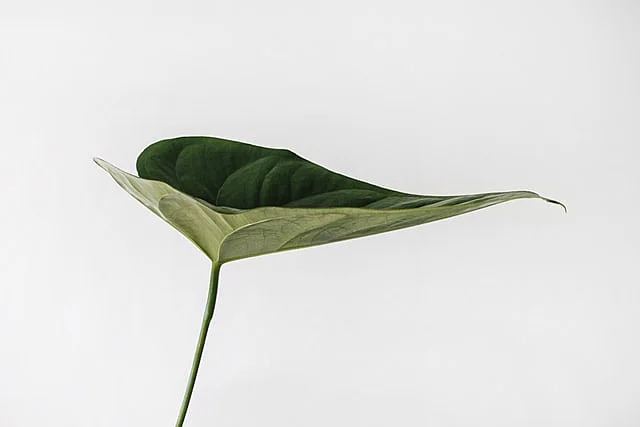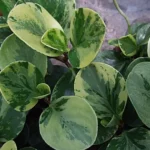Table of Contents
Introduction
Philodendron Cordatum is an uncommon species, native to a small area in Southeastern Brazil. It is actually an attractive trailing plant, with heart-shaped emerald green leaves.
The plant is easy to care for and can tolerate a higher level of neglect than most plants, and a lower level of light.
I once had one for 12 years climbing all around the kitchen surviving on a cup of water every week.
How to care for Philodendron Cordatum
Light Requirements
Your plant will grow well indoors, in warm humid conditions, and will tolerate varying levels of light, and can actually survive with minimal light.
Philodendron Cordatum has aerial roots and given a humid moist climate will grow outside. It can reach a height of 7 m or more and will require a supporting stake.
Temperature Requirements
In climates where the nighttime temperature does not fall below 8-10 degrees celsius, your plant should grow well outdoors, especially on a brick or stone wall that retains the heat of the sun.
Another benefit is that it is hardly ever attacked by bugs and seems extremely hardy.
Soil Requirements
They do best when planted in the spring, mix your soil with sand, peat, and charcoal. Water regularly until the plant is established and it will require more water in Summer than in Winter.
If you are growing your Philodendron Cordatum inside, keep the leaves free of dust, by wiping them with a damp cloth,
Humidity Requirements
This is a plant that thrives on humidity, and if you can set it up in the bathroom this is a perfect spot for it. Put up a wire and let it trail around, it will look wonderful.
If you have a fully tiled bathroom you will be able to hose it lightly to keep it free of dust and grime, and just let it grow! If it is outside, put it in a sheltered place.
How to Water your Philodendron Cordatum
If you have an indoor plant try not to overwater it. Your indoor plant will require more water in Summer than in Winter, half a cup of water every day or second day in really hot weather, and half a cup a week during winter.
Put your finger in the soil in the pot, and if it still feels damp, don’t water it. If your plant is outside, keep the soil well-drained, and weeded.
How to Fertilize
Use a liquid fertilizer, twice a year should be enough, at the beginning of Summer and late Winter, and be guided by the directions.
Philodendron Cordatum really doesn’t require much help. Liquid fertilizer is ideal for all indoor plants, as you will not want any lingering smell in the house.
Pruning your Plant
If you are concerned that your plant is growing so quickly that it looks untidy and straggly, you can prune it, and also prune away any dead leaves and stems. Usually, pruning makes it seem even more vigorous and it will grow stronger and healthier.
Propagation
If you are going to grow some more plants Spring is the best time to propagate. Take stem cuttings and place them in a glass with some water in it, and after a few days, you will see roots beginning to grow.
Plant the cuttings in prepared soil about one week later, and keep watering daily until you are sure that they are growing.
Dealing with pests and Diseases
Philodendron Cordatum is a plant that is hardly ever attacked by anything. The glossy leaves don’t seem to attract insects and bugs.
However, if your plant is outside it may attract snails, and snails are easily deterred by mulching around the plant with used coffee grounds.
The snail will not pass this barrier, so it will keep slugs and snails away. For some reason, the plant also seems to respond well to the coffee grounds, and they are said to expedite growth. Probably due to the tropical origin of the plant, and micronutrients in coffee grounds.
Araceae Plants
The Heartleaf Philodendron Cordatum is a member of the Araceae family. Araceae have tubers and this means that the plant is able to grow new shoots from anywhere in the plant if a part of it is damaged, and it will continue to grow quite big lovely evergreen leaves.
Another way to grow them indoors is to make some hanging baskets. Buy the baskets, lined with bark, and fill them with the prepared soil, once your plant(s) is established, hang it in the house and let the leaves trail down.
The plant prefers low light and will do very well hanging in your house. Most Araceae plants make good indoor plants.
Other Ways to Grow Your Philodendron Cordatum
It is rather a strange fact that you can actually grow a Philodendron in water permanently. Fill a clear jar with water from the tap, and allow it to sit for about 12 hours to disperse the chlorine.
Prepare your plant and place it in the water and leave it to grow there permanently, and see what it does.
Our indoor plants don’t like the air to become too dry and mostly do better in humid conditions. You can increase the humidity by doing a few simple things.
- Mist your plants with a spray.
- Place a couple of plants together, creating a microclimate of humidity.
- Use Pebble trays, and as the water evaporates the moisture in the air increases.
- If you have a lot of indoor plants, buy a humidifier.
- Put the plants in the bathroom.
Your Philodendron Cordatum will do very well in these humid conditions and should last for years in the house.
Conclusion
As you can see your Philodendron Cordatum does not require much-specialized care and will grow well whatever you do to it. However, with a bit of care, it will look healthier with really large green glossy leaves in a heart shape.
Buy some pruning scissors for indoors, so that you can cut any dead bits off your plant the minute you see them, keeping your plant healthy all year round.
Photo by Sarah Dorweiler on Unsplash



